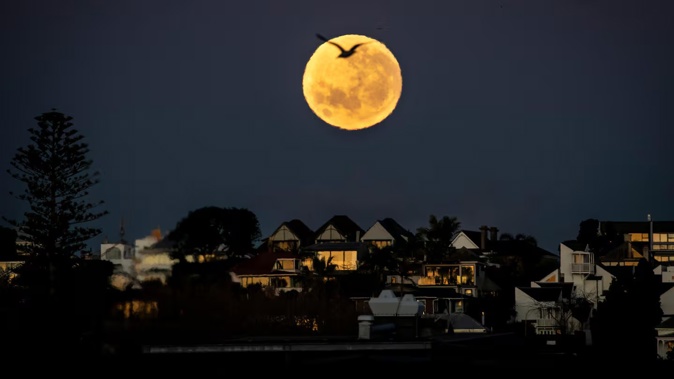
New Zealanders will have the chance to see the biggest supermoon of the year illuminate our skies this week.
This moon will be visible after sunset on Friday across the country and will appear larger and brighter than normal full moons.
Stardome astronomer Josh Aoraki told the Herald the moon’s orbit is elliptical, which brings it closer to us at certain points.
“If it happens to align with a full moon being at its closest point that’s what we call a supermoon,” he said.
He confirmed the best viewing time would be Friday evening directly after the sun has set.
“The moon will rise as soon as the sun sets in the west,” he said.
“So if you look in the opposite direction in the east you’re going to see the moon rise directly as the sun is going down.”
The astronomer said people worldwide will be able to see it.

People gather at the base of the Cape Palliser Lighthouse in New Zealand to view the biggest supermoon of 2014. Picture / Mark Gee
The moon will appear more orange when it rises, due to its proximity to the horizon.
“Whenever the moon rises it always appears quite colourful. There is often that red hue on the horizon when the moon is rising or setting,” Aoraki said.
“It’s the same reason why we have colourful sunsets – it’s the refraction of light in the atmosphere. When it rises, that’s when it’s at its most colourful and bright looking so it’s definitely the best time to see it.”
The average distance of the moon from Earth is about 384,000 km but at its furthest point it can get as far as 400,000km and it can get as close as 360,000km.
Friday’s supermoon comes at the same time as New Zealanders have another chance to see a comet with the naked eye.
Comet C/2023 A3 is expected to be visible in the western skies of the country until later in the week.
“You’re going to see a really bright planet which is Venus, and if you look below that to the right, you might see this little fuzzy patch in the sky. That’s the comet,” Aoraki told the Herald.
He said the comet was likely to have a tail extending from the back.
However, he said the problem with the full moon was it was a huge source of light and it would wash out the stars and comet in the sky.
“It will be much easier to see the comet once the moon sets or before it rises on Saturday and Sunday.”
David Williams is an Auckland-based Multimedia Journalist who joined the Herald in 2023. He covers breaking news and general topics.
Take your Radio, Podcasts and Music with you









